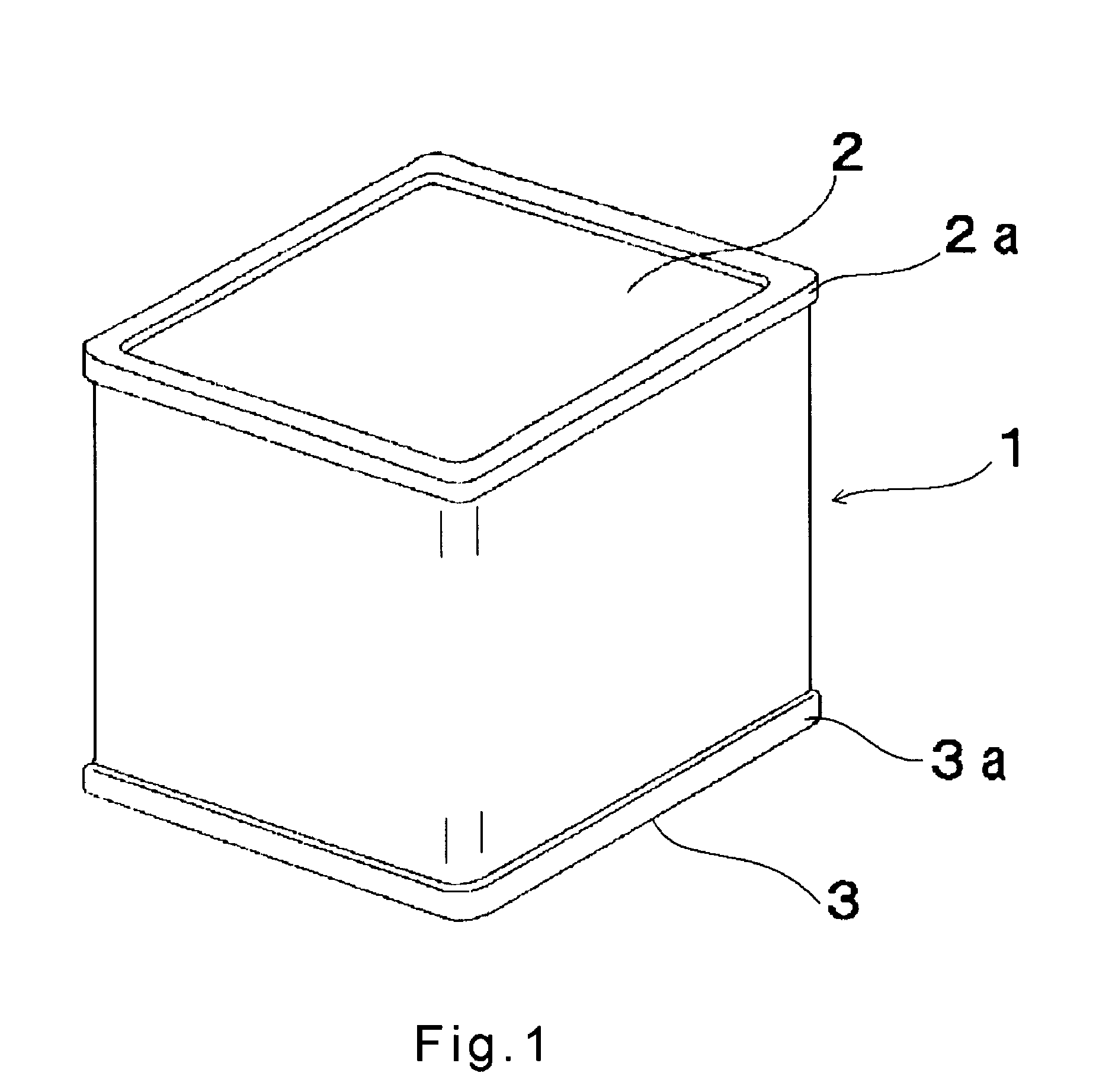Three-piece square can and method of manufacturing the same
a three-piece square and rectangular technology, applied in the direction of cell components, cell components, jackets/case materials, etc., can solve the problems of reducing the sealing property at the side seam of the can body, affecting the rigidity of the bottom side of the can, and affecting the operation of the can. , to achieve the effect of increasing the rigidity of the can wall, enhancing the radiation of heat, and increasing the surface area
- Summary
- Abstract
- Description
- Claims
- Application Information
AI Technical Summary
Benefits of technology
Problems solved by technology
Method used
Image
Examples
embodiment 1
[0147]A substrate is formed by applying a chromic phosphoric treatment with an amount of chromium of 20 mg / m2 in metal chromium conversion to a surface of an aluminum plate (3003-H14) having a plate thickness of 0.5 mm and having the composition consisting of 1.1 weight % of Mn, 0.19 weight % of Cu, 0.30 weight % of Si, 0.43 weight % of Fe and a balance of Al.
[0148]To one surface of the substrate, a biaxially stretched film (thickness: 30 μm) formed of a polyethylene terephthalate / iso phthalate (PET / I) for copolymer resin containing 10 molecular % of isophthalic acid as a copolymer content is laminated at a temperature of 245° C. thus manufacturing a resin-coated aluminum plate. This film has a melting point of 240° C. and exhibits an X-ray diffraction intensity ratio IA / IB of 5.0.
[0149]The resin coated aluminum plate obtained by the above-mentioned manner is blanked into a circular blank and, thereafter, drawing forming is applied to the circular blank. After trimming lug portion a...
embodiment 2
[0150]This embodiment 2 is substantially equal to the embodiment 1 except for that a biaxially stretched film (thickness: 30 μm) which has a melting point different from the melting point of the biaxially stretched film used in the embodiment 1 is laminated to the surface of the substrate used in the embodiment 1 at a temperature of 230° C. A film formed by this embodiment 2 has a melting point of 230° C. and an X-ray diffraction intensity ratio of IA / IB is 4.0.
embodiment 3
[0151]This embodiment 3 is substantially equal to the embodiment 1 except for that a biaxially stretched film (thickness: 30 μm) which has a melting point different from the melting point of the biaxially stretched film used in the embodiment 1 is laminated to the surface of the substrate used in the embodiment 1 at a temperature of 235° C. A film formed by this embodiment 3 has a melting point of 230° C. and an X-ray diffraction intensity ratio of IA / IB is 3.5.
PUM
| Property | Measurement | Unit |
|---|---|---|
| surface distance | aaaaa | aaaaa |
| surface distance | aaaaa | aaaaa |
| thickness | aaaaa | aaaaa |
Abstract
Description
Claims
Application Information
 Login to View More
Login to View More - R&D
- Intellectual Property
- Life Sciences
- Materials
- Tech Scout
- Unparalleled Data Quality
- Higher Quality Content
- 60% Fewer Hallucinations
Browse by: Latest US Patents, China's latest patents, Technical Efficacy Thesaurus, Application Domain, Technology Topic, Popular Technical Reports.
© 2025 PatSnap. All rights reserved.Legal|Privacy policy|Modern Slavery Act Transparency Statement|Sitemap|About US| Contact US: help@patsnap.com



